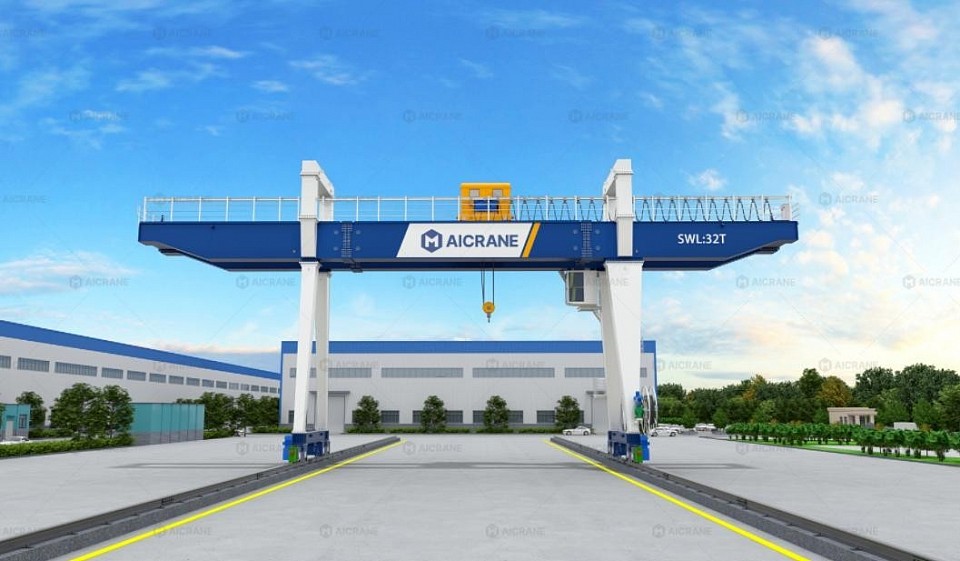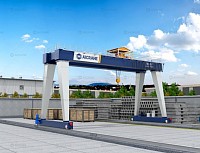How Customization Choices Affect Cost, Safety, and Efficiency
Gantry cranes are an essential piece of lifting equipment across industries such as manufacturing, shipping, steel production, and construction. They are versatile and capable of handling heavy loads, making them indispensable for operations requiring precise material handling. While standard gantry crane designs serve many general purposes, some applications demand a higher level of customization—particularly in hook and trolley configurations. Understanding how these customizations affect the gantry crane price is crucial for businesses looking to balance functionality, safety, and cost-effectiveness.
Understanding Gantry Crane Hooks and Trolleys
Before delving into pricing, it’s important to understand what gantry crane hooks and trolleys are and their roles.
Hooks are the attachment points that connect the crane’s lifting mechanism to the load. They vary in size, shape, material, and weight capacity depending on the application. Some industries require specialized hooks designed for irregular-shaped, bulky, or fragile loads.
Trolleys are the mechanisms that move the hook horizontally along the crane’s bridge. The trolley houses the hoist and often includes motors, gears, and control systems that determine its speed, precision, and load-handling capabilities. Trolley configurations can be single or double, powered or manual, and may include advanced features like variable speed control, shock load prevention, and precise positioning systems.
The combination of hooks and trolleys determines the crane’s lifting versatility, efficiency, and overall performance.
Standard vs. Custom Configurations
Standard gantry crane configurations are designed to meet the typical requirements of industries with general lifting needs. These setups often include a single hoist with a standard hook and trolley system. While cost-effective, standard configurations may not provide optimal performance for all operations.
Custom configurations, on the other hand, are tailored to meet specific operational requirements. Examples include:
Multiple hooks on a single trolley to lift and transport multiple loads simultaneously.
Adjustable hook designs for handling irregularly shaped or oversized items.
Specialized trolley systems with dual-speed motors or shock-absorbing capabilities for fragile loads.
Automated or semi-automated trolleys with precise positioning systems for repetitive tasks requiring high accuracy.
These customizations enhance operational flexibility, safety, and efficiency but also increase the complexity and cost of the crane.
Factors Affecting Price Due to Custom Configurations
Several key factors drive the price impact of custom hook and trolley configurations:
1. Material and Manufacturing Complexity
Custom hooks may be manufactured from high-strength steel alloys or other specialized materials to handle heavier loads or unique shapes. Similarly, custom trolleys may incorporate advanced components like reinforced gears, precision bearings, and high-performance motors. The use of premium materials and the complexity of manufacturing processes directly contribute to higher costs.
2. Load Capacity and Safety Requirements
Higher load capacities require more robust hooks and trolley mechanisms. Reinforced structures, heavier-duty motors, and enhanced braking systems are needed to ensure safe operations. Compliance with industry safety standards (such as ISO, OSHA, or CMAA guidelines) often adds to the cost, as custom configurations must undergo rigorous testing and certification.
3. Technological Enhancements
Modern custom trolleys often include advanced technological features such as:
Variable speed control for precise movement and positioning.
Shock load prevention systems to reduce wear and protect sensitive loads.
Wireless remote control for safer operation in hazardous environments.
Integration with automated handling systems for high-volume production environments.
Each added technology layer increases the initial investment and sometimes ongoing maintenance costs.
4. Design and Engineering Costs
Custom configurations require detailed engineering analysis to ensure structural integrity and operational efficiency. This includes load simulations, stress testing, and bespoke mechanical design. Engineering hours, prototype development, and testing phases all contribute to the final price of a customized crane.
5. Manufacturing Lead Time and Labor
Custom hook and trolley configurations typically extend the manufacturing timeline due to additional fabrication, assembly, and testing requirements. Labor costs rise proportionally with the complexity and precision of the components.
6. Maintenance and Lifecycle Costs
While customizations improve functionality, they can also introduce higher maintenance demands. Complex trolley systems with multiple motors or precise positioning mechanisms may require specialized maintenance personnel and spare parts, impacting the long-term cost of ownership.
Practical Examples of Price Variation
To illustrate, consider two gantry cranes with identical load capacities and spans:
Standard configuration: Single hoist, basic hook, and standard trolley. Price: $50,000 – $70,000 depending on manufacturer and features.
Custom configuration: Dual hooks with adjustable positions, shock-absorbing trolleys with variable speed, and remote-controlled operation. Price: $85,000 – $120,000, reflecting increased material, engineering, and technological costs.
The price difference can be substantial, often ranging from 40% to 70% higher than standard models, depending on the level of customization and technological sophistication.
Strategic Considerations for Businesses
When evaluating custom gantry crane configurations, businesses must weigh the benefits against the cost implications. Here are key considerations:
Operational Efficiency: Custom hooks and trolleys can significantly reduce cycle times and improve productivity, especially for specialized or repetitive lifting tasks.
Safety and Compliance: Investing in high-quality, certified custom components can prevent accidents, reduce downtime, and mitigate regulatory risks.
Flexibility for Future Needs: Custom configurations offer adaptability for handling a wider variety of loads, making the crane more versatile and potentially extending its service life.
Return on Investment (ROI): While the initial cost may be higher, improvements in efficiency, safety, and load handling often justify the investment over the crane’s operational lifetime.
Tips for Managing Costs
Businesses looking to adopt custom gantry crane configurations can manage costs effectively by:
Consulting with manufacturers: Experienced gantry crane suppliers can recommend configurations that meet operational needs without unnecessary complexity.
Prioritizing critical features: Focus on customizations that directly improve safety or efficiency while avoiding non-essential add-ons.
Considering modular upgrades: Some cranes allow for phased upgrades of trolley or hook systems, spreading out the cost over time.
Comparing quotes: Obtain multiple proposals to ensure competitive pricing and understand the value of specific customizations.
Conclusion
Custom hook and trolley configurations offer significant operational advantages for gantry cranes, including enhanced versatility, safety, and efficiency. However, these benefits come at a higher price due to increased material costs, engineering complexity, advanced technology, and specialized maintenance requirements.
Understanding the factors driving cost and strategically evaluating which customizations are truly necessary can help businesses make informed decisions, optimize their crane investment, and achieve the best balance between performance and price. Ultimately, a well-planned custom gantry crane configuration can deliver substantial long-term value, making it a worthwhile consideration for operations with unique or demanding lifting requirements.


